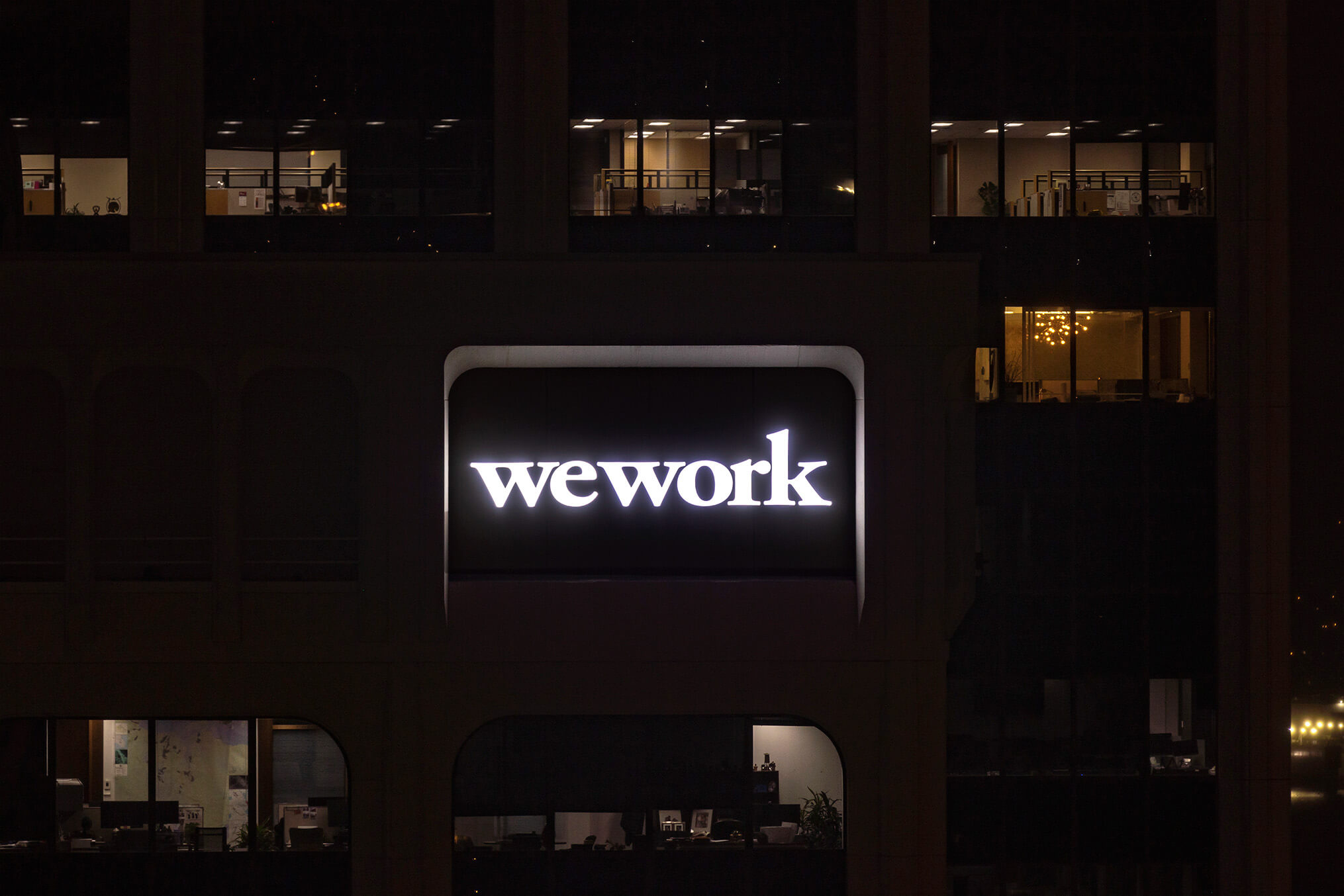What you need to know about the WeWork IPO postponement

Table of content
In September 2019, WeWork announced first a delay and then a withdrawal of its initial public offering. Although it took place in the middle of significant shakeups at WeWork, the move nevertheless surprised investors and made headlines.
WeWork’s decision to withdraw its IPO presents a teachable moment for other companies seeking to go public and for investors looking for the next company to support.
The IPO: What was the plan?
WeWork launched in 2010, offering companies instant access to flexible workspaces in major cities. Flexible, short-term contracts with up-to-date decor and other amenities set WeWork’s spaces apart from more conventional leased office spaces.
WeWork grew exponentially as an office space provider in the years between 2010 and 2017. From two locations in 2010, the company had grown to 23 in eight cities by 2014. In November 2017, WeWork had 178 locations in 56 cities and 18 different countries, says reporter Stephen J. Bronner. WeWork leased some 10 million square feet of office space and had 20,000 customers by the end of that year. In 2019, WeWork rebranded as part of The We Company, along with ventures like WeGrow.
WeWork’s core business isn’t a new idea: Leasing office space has been a regular business practice for centuries. Yet CEO Adam Neumann regularly pushes the idea that it’s WeWork’s aspirations and soul, rather than its products or services, that drive interest and investment in the company.
In 2017, for instance, Neumann claimed that the company’s “valuation and size today are much more based on our energy and spirituality than it is on a multiple of revenue.” It was the idea of WeWork and a passion for that idea that drove the company through the next few years and into the creation of its IPO.

Shakeups at WeWork
WeWork’s IPO announcement wasn’t the smash hit its leadership had hoped. Rather, criticism began to fly nearly as soon as the S-1 was released to the public.
“WeWork might not be the largest IPO of 2019, but it is easily the most ridiculous, and the most dangerous,” says David Trainer, CEO of New Constructs, citing factors like the company’s lack of profits, questionable governance, and failure to offer a truly new take on office rentals.
Trouble in WeWork’s leadership
One of the top concerns cited by Trainer and other sources focused on WeWork’s governance. Although WeWork was cofounded by Adam Neumann and Miguel McKelvey, the company’s initial Form S-1 deemphasized McKelvey’s involvement, focusing instead on the work of Neumann’s wife Rebekah. It also laid out a plan by which the Neumanns could maintain control of WeWork even if one or both of them were incapacitated.
The plan undermined accountability at the top of WeWork’s power structure, says Charles M. Elson, a professor of corporate governance at the University of Delaware. “It’s concerning because how can a spouse be objective — that’s why you typically want independents to do it.”
In response to these concerns, WeWork made several changes to its oversight and governance structure in its Form S-1. For instance, it cut the super voting shares of its founders and early investors in half and gave the board the power to remove the CEO.
Financial about the WeWork stock
Even before the S-1 became public, some investors were raising yellow flags in the face of WeWork’s business dealings. For instance, in March 2019, Fidelity cut its valuation of its WeWork stake by more than a third, from $27.9 billion to $18.3 billion, says Miles Weiss at Bloomberg.
The WeWork IPO date was then postponed after concerns arose surrounding founder Adam Neumann and his business dealings, including various loans against Adam Neumann’s stake in WeWork and Neumann’s sales of his own WeWork stock. Such sales have been criticized generally by various commentators, including Bill Gurley, a partner at Benchmark, which also invested in WeWork.
Questions also arose surrounding Neumann’s practice of using these loans to buy real estate, which he then leased back to WeWork at a profit. An issue regarding Neumann’s trademarking the WeWork name and then selling it to the company resulted in diminished investor confidence, which ultimately led to Neumann backtracking and admitting, in mid-2019, that the sale had been ill-conceived.
The We crisis comes to a head
Changes to the company’s governance and leadership were topped off by a major shakeup. In late September 2019, WeWork CEO Adam Neumann stepped down, citing the “best interest of the company” in a public statement.
WeWork’s largest investor SoftBank backed the change in leadership, including the instatement of two new co-CEOs.
“We’ve got to regain the trust of those corporate customers who are going to think twice, “Do you really have the financial means?” We’ve got to make sure that our employees understand that we’re never going to go through a crisis, the existential crisis we just got through,” Marcelo Claure, COO of SoftBank and new CEO of WeWork, was reported as saying in a leaked transcript of a WeWork staff meeting.This wasn’t the end for We, but a bumpy road remained before WeWork finally made it into the stock market, with the WeWork IPO 2021.

Lessons For Launch
The WeWork initial public offering contains a number of teachable moments for businesses seeking to go public. These include the need to account for economic context and the need to speak effectively to key audiences.
Mind the economy
Some analysts have said that WeWork’s IPO might have succeeded, even in the face of these obstacles, in a different set of economic circumstances.
For instance, in early September 2019, SoftBank suggested WeWork delay or reconsider its IPO. SoftBank held approximately a 31 percent stake in WeWork, and it risked losing billions if the company’s valuation dipped, said Chris Lane, a senior research analyst at brokerage firm Sanford C. Bernstein. “With investor concern regarding the mid-to-near term outlook for the global economy the timing for this IPO isn’t ideal.”
The economic context hampered investor enthusiasm for WeWork in other ways as well. The WeWork IPO stock arose in the context of other less-than-fulfilling public debuts from once-lauded startups, says Kathleen Smith, principal at Renaissance Capital.
For instance, shares of Uber and Lyft dipped at the end of the third quarter in 2019. Peloton, for which investors had high hopes as a public company, ended its first day of trading 11 percent below its IPO price, disappointing its leadership, says the indoor fitness brand cofounder John Foley.
“WeWork is emblematic of a systemic problem in Silicon Valley. We are seeing a beginning of a correction, a back to sanity moment,” says Megan Bent, founder and managing partner of investment firm Harbinger Ventures.
Know your audience
The release of the initial S-1 in August 2019 did not help WeWork’s public reputation. For instance, one executive who read the publicly-released S-1 expressed shock at “how poorly the document made the business case for the company,” writes Reeves Wiedeman in New York Magazine.
The WeWork executive wasn’t the only one who expressed dismay. “Within a few days, two WeWork competitors told me that landlords with WeWork locations in their buildings began reaching out to see if the competitors would be able to move into the spaces, just in case,” Wiedeman reports.
What went wrong? Wiedeman argues that the primary problem with the S-1 itself was its focus on surface appearances, not on the financial or innovative strength of WeWork itself. Instead of relying on facts and figures, the S-1 attempted to use photographs and platitudes to sell the company. And while these methods can be excellent marketing tools, they aren’t appropriate for presentation to serious investors or to a public that wishes to see companies making sound business decisions.
The cost for the We brand was real. Within a few weeks, it was discussed to slash the initial WeWork stock valuation by more than half, from a $47 billion WeWork IPO price to approximately $20 billion, reporters Maureen Farrell and Eliot Brown at the Wall Street Journal write. A stronger business case, built with more attention focused on the purpose and audience for the S-1, might have helped WeWork avoid the loss of reputation that contributed to the withdrawal of its IPO.
The aftermath
After the failed IPO attempt, another two years were to pass before the new leadership could take the company public.
Rather than announcing a traditional IPO, this time the real estate company went public through special purpose acquisition company BowX Acquisition Corp — something that, incidentally, exemplifies the influence of blank check companies in the SPAC merger fever of 2021.
But while the existing company continues to be one of the big names in commercial real estate, with the WeWork public experiencing growth and its stock traded publicly thanks to the IPO through BowX Acquisition Corp, it remains a far cry from the ambitious former vision of a We empire.
Although WeWork finally got its IPO through a SPAC merger, in the third quarter of 2021, the IPO valuation had already tanked from the original $47 billion to $9 billion.
Nowadays, the company is traded at a $5.1 billion, and is seen by many as a cautionary tale to power-hungry startups.
Revolutionize your deal management
Begin your 30-day full-access free trial today